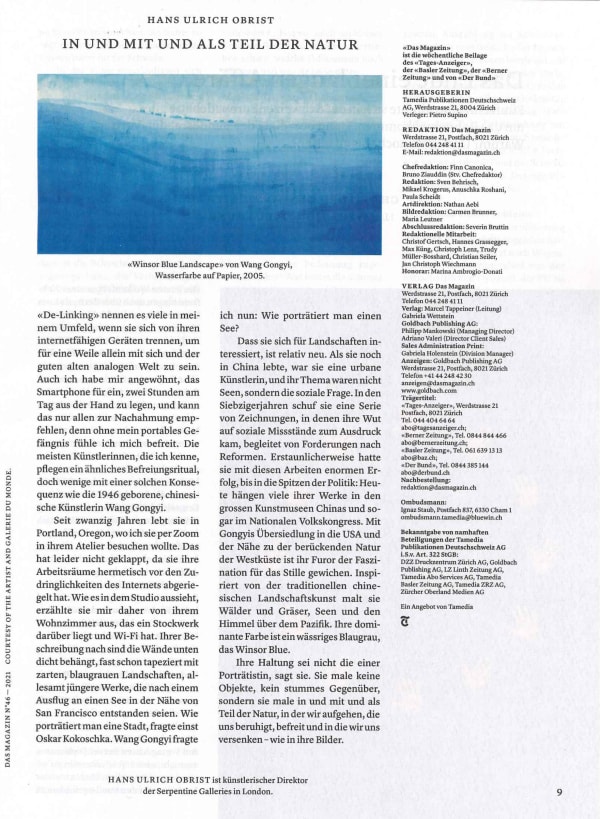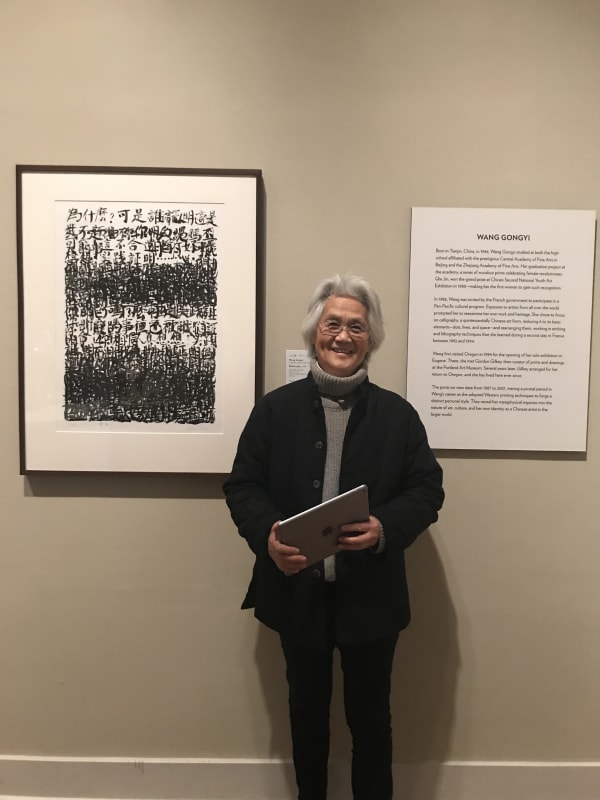Column Hans Ulrich Obrist, Das Magazin
[English Translation]
How do you portray a lake?
The Chinese painter Wang Gongyi and her love for Winsor Blue.
Many people around me call it “de-linking” when they disconnect from their internet-enabled devices in order to be alone with themselves and the good old analog world for a while. I've also got into the habit of putting my smartphone down for an hour or two a day, and I can only recommend that everyone imitate it, because without my portable prison I feel liberated. Most of the female artists I know practice a similar liberation ritual, but few with such consistency as the Chinese artist Wang Gongyi, who was born in 1946.
She has lived in Portland, Oregon for twenty years, where I wanted to zoom in to visit her in her studio. Unfortunately, that didn't work because she hermetically sealed off her workspaces from the intrusions of the Internet. So she told me what the studio looks like from her living room, which is one floor above and has Wi-Fi. According to her description, the walls below are tightly hung, almost wallpapered with delicate, blue-gray landscapes, all of them more recent works that were created after a trip to a lake near San Francisco (Lake Tahoe). How do you portray a city? Austrian expressionistic artist and poet Oskar Kokoschka once asked. I asked Wang Gongyi: How do you portray a lake?
Her interest in landscapes is considered relatively new. When she lived in China she was an urban artist and her subject was not lakes, but the social issue. In the 1970s, she created a series of works (woodcut prints) that expressed her anger at social injustices, accompanied by calls for reform. Amazingly, she had enormous success with this work, right up to the top of politics: Today, many of her works are hanging in the major art museums in China and even in the National People's Congress. With Gongyi's move to the USA and the proximity to the enchanting nature of the west coast, her furor has given way to a fascination for silence. Inspired by traditional Chinese landscape art, she paints forests and grasses, lakes and the sky over the Pacific. Their dominant color is a watery blue-gray, the Winsor Blue.
Her attitude is not that of a portraitist, she says. She doesn't paint objects as silent counterparts. She paints in nature and with nature, immersing herself into it, as part of nature - in which the viewers can feel and take in, which calms us, frees us and in which we immerse ourselves - like in her pictures.
Hans Ulrich Obrist is the Artistic Director of the Serpentine Galleries in London.
Published: 18.11.2021, 11:00
https://www.bernerzeitung.ch/wie-portraetiert-man-einen-see-307128846314?idp=CeleraOne&new_user=yes






